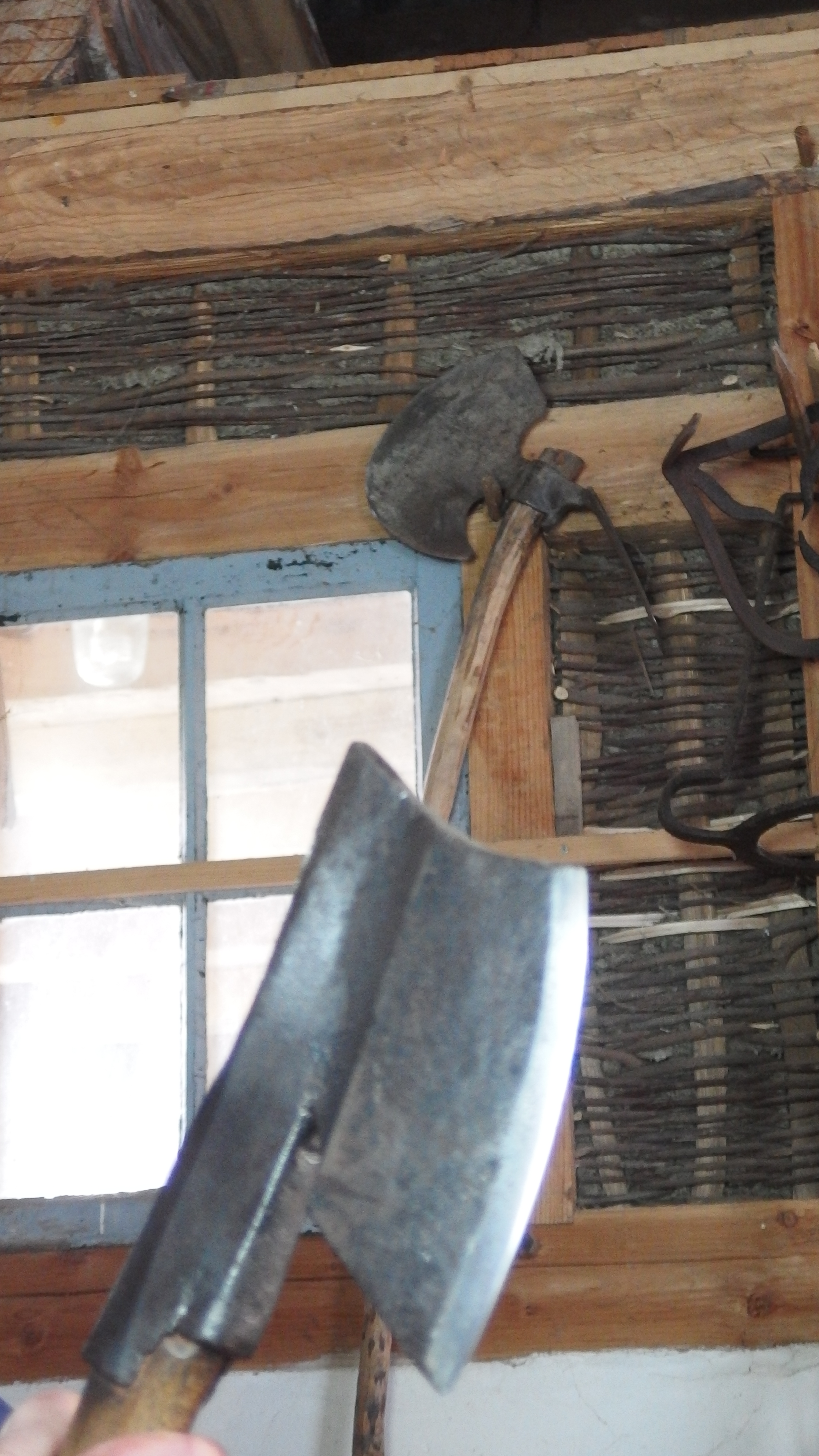First Time I'd ever heard of a peat-axe actually, but it is plausible? Holland used to be covered in peat (called "turf" or "veen"). The same goes for Scandinavia.
Peat actually does preserve stuff quite nicely, as both the 1942 Elwell as well as the Danish axe resurfaced from it. And although the danish axe was pitted, it wasn't nearly as bad as this one though. The reason I don't know that there actually where peat axes is because over here we used something that is called a "veensteker" or "turfsteker" (roughly translated as 'turfstabber' or 'peatstabber'):
As for the handles, will look into that! Although I'm still not certain it actually is a peat axe: Although it is light for it size, I would's actually call it light. Its 1120 gram, so that equates to rougly 2 pounds 7,5 oz. And it still doesn't explain why it has a hardened poll and a hardenend blade? And with hardenend I actually mean the nail pounding variety without mushrooming. A peat axe wouldn't have any use for it. and is mild steel. This one isn't. Or am I missing something here? Is it possible there are hardened blades on peat axes?
I also know that the ones used in Holland don't have a hardened edge, as peat is relatively soft. I went to dig it up and dry it as a kid, because I had a miniature working peat engine. Its actually the same as the steam engine you have, only way smaller and piston operated. I cant seem to find a photo of it and I'm actually wondering what happened to that thing?

My dad made that thing for me.

As for its age: I mentioned it came from Lübeck didn't I?
https://en.wikipedia.org/wiki/Lübeck You can read a lot of info on the city in the link. And this is a Timeline:
https://en.wikipedia.org/wiki/Timeline_of_Lübeck European city's, unlike the ones in America, date back to the dark ages or even before that And the bigger cities are well documented because of the church. That same church plays a central role in why this is axe is as old as I think it is. Its called the "Lübecker Dom" and you can find it on the timeline as well:
As you can see from the timeline it clearly states that building that cathedral began in 1173. And it finished in 1210. It's well documented and is also a Unesco world heritage site. And I now hear you thinking: Thats still not proof, because finding an axe inside a church that still standing could have been brought inside the church much later. And you would be right. Except one thing: It wasn't actually found inside the church, but under it

. And normally you would be an absolute idiot to dig at a world heritage site and destroy a building like that. But something else happened on the 28th of March 1942:
Thats what an airraid of the RAF looks like. The city was discribed by Arthur Harris (RAF Air Officer) "built more like a fire-lighter than a human habitation". Long story short: It got bombed to bits, and was fully rebuilt in 1982. The tower you see in the background is the "Marienkirche" (also Unesco), and was a higher priority then the "Lübecker Dom", and was finished more the 20 years before that. Thats why it took so long. Inside the church, before 1942, you would have found a large organ. It currently isn't there anymorebecause of the bombing:
And under the hole that was left behind, is where my axe was found among old dated coins

So you are "slightly off" by a couple of centuries

That narrows the timeline down to 1210 at its latest, and roughly 1050 at its soonest: So 1050-to 1210 A.D. More likely would be 1100- 1173 A.D.
As for construction: it isn't die forged: You can see the forge lines quite clearly: The ears for instance, aren't one piece with eye, as is the hardened poll, or the blade and the bridge for that matter. With Die-forging that would be the case. You can also see the gentle taper in the blade itself as well as 'mistakes' that won't happen on a die forge.
And as for the Skandi link: Lübeck is part of Germany now, and has been quite some time. So it would most likely be called al Carl helsper, Helko, Ochsenkopf or any other variety if it where 19th or 20th century. Thats why you only come across kemi axes in Denmark on the 2 big islands the closest to Norway and Sweden. Sjaelland being the one Kopenhagen is found on. The rest has a German influence, as is clearly visible not only in axes, but in architecture as well.
So all in all, I'm convinced of its age and heritage, since all is documented, but I'm not that certain of its function. Will try to get more info, as well as get at least one photo before it was sent. I actually didn't take one, as I'd like to start right away. It's a thing with photographers: Taking pictures as a job means you rarely take pictures of anything for yourself.














